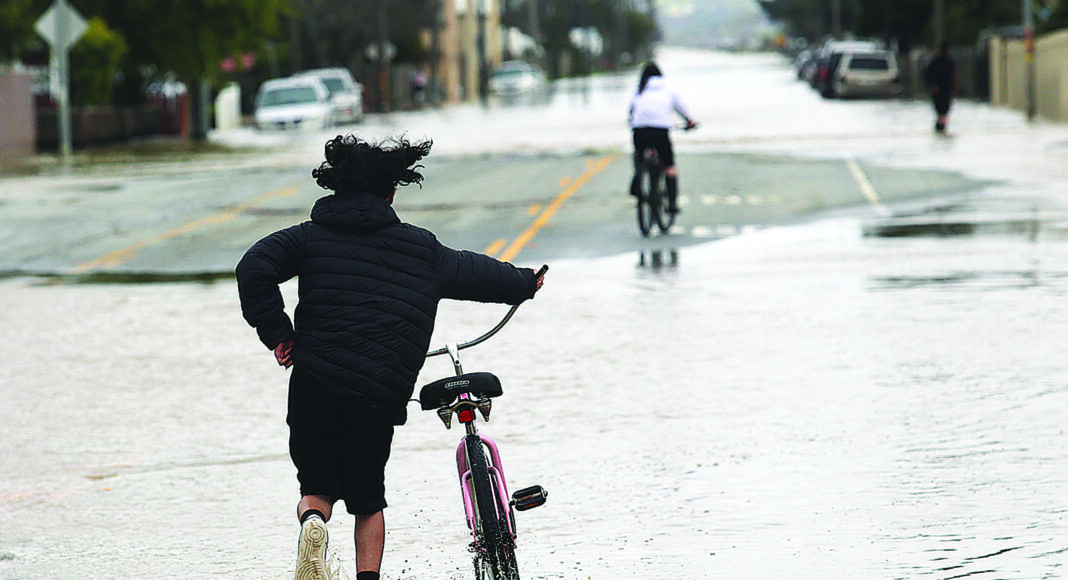After the devastation of the Pajaro floods in March, families in South County continue to rely on financial support from local organizations as they start to rebuild their lives.
While the waters have receded and a sense of normalcy has been restored, some people are still struggling to make ends meet. Others are getting the help they need to repair homes that were damaged by the floods.
Over $14 million in financial relief has been distributed to flood victims. About half of that money has come from the Federal Emergency Management Agency (FEMA), which distributed close to $7.5 million to qualifying applicants.
Nonprofit organizations Community Bridges and the Community Action Board of Santa Cruz County (CAB) have provided $6.7 million. These organizations have been working with flood victims from day one, stepping in after the disaster struck and state and federal relief was not yet available.
Tony Nuñez-Palomino, the communications manager for Community Bridges, says that many of the families who are still reaching out for help need assistance paying rent or buying groceries.
“A lot of people were living paycheck to paycheck during this and something like [the floods] completely depleted all of their savings,” Nuñez-Palomino says.
In the aftermath of the disaster, Community Bridges handed out $500 gift cards to residents as immediate relief. Individuals directly impacted by the floods, or those making 80% below the area median income, qualified to receive aid. The organization followed up with checks between $1,450 to $2,750 of additional assistance.
Early on, the county of Monterey allotted $750,000 to be distributed as direct assistance to all county residents impacted by the storm. Community Bridges was one of the organizations designated to administer the funds. This was supplemented by $500,000 in community donations.
Currently, the organization is in its “third phase” of financial assistance, according to Nuñez-Palomino. This entails helping people secure permanent housing or repair damaged homes. About 60 families are getting help rebuilding.
According to FEMA, 1,469 individuals and households in Monterey County—which includes Pajaro—were granted federal financial assistance to date. However, undocumented immigrants did not qualify for this aid. Many Pajaro flood victims are undocumented farmworkers and don’t qualify for state or federal aid.
In the wake of the floods, the state is attempting to address the disparity in access to emergency disaster relief.
Relief For Immigrants
This past June, Gov. Gavin Newsom launched the Storm Assistance For Immigrants Project (SAI), a $95 million plan to provide aid for undocumented immigrants who do not qualify for FEMA aid.
Under the project, individuals who were affected by the winter storms in 2023 can receive up to $4,500 in assistance. The state invited a select number of nonprofit organizations within each county in the state to administer the grant. In Santa Cruz County, the Community Action Board was tapped to lead the efforts.
Paulina Moreno, a program director for CAB, is managing the SAI project locally and says her organization is a natural choice to administer it.
“Because of our track record, with over 55 years serving the community in Santa Cruz and Pajaro, it just made sense,” Moreno says.
Since the project launched in June, Moreno says that CAB has provided around $5 million in assistance to 3,000 individuals..The nonprofit is providing services not only in Spanish, but also in indigenous Mexican languages such as Mixteco and Zapoteco.
Moreno says that California is setting an important precedent with storm relief for undocumented residents.
“I’m very proud that […] we have been one of the states that during a crisis, hasn’t shied away from being bold and making a statement that our undocumented community is just like every other community member,” Moreno says.
“It’s the state’s responsibility, it’s the local responsibility to ensure that our community doesn’t get left behind.”
SAI assistance will be available through May 31, 2024 or until the funds run out.













